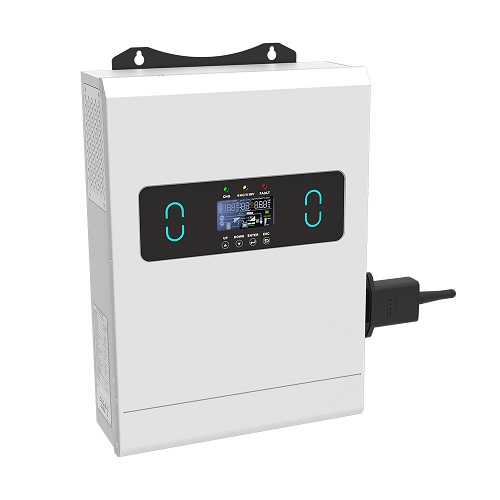With the global transition to renewable energy, solar energy has become one of the most convenient and sustainable solutions. As one of the key components of a solar installation, the On Grid Solar Inverter plays a central role in the efficient utilization of solar energy. Often referred to as the On Grid Solar Inverter, this device ensures that the power captured by the solar panels is utilized efficiently, shared with the grid, and even sold back to the utility company.
What is the On Grid Solar Inverter?
The On Grid Solar Inverter is an inverter that connects a solar power system directly to the utility grid. It converts the direct current (DC) generated by the solar panels into alternating current (AC), which is the standard form of electricity used in homes and businesses.
Unlike off-grid systems that require battery storage, grid-tied systems use the grid as a virtual battery. This setup allows users to draw power from the grid when there is a solar deficit and feed excess power back into the grid when there is a surplus.
How it works
- Solar collection: Solar panels absorb sunlight and generate DC power.
- DC to AC: The On Grid Solar Inverter converts DC power to usable AC power.
- Synchronization with the grid: The inverter is matched to the grid voltage and frequency to ensure seamless integration.
- Power distribution: The converted power is used in real time. If the system generates more power than it consumes, the excess is delivered to the grid.
- Net metering: Many utilities offer net metering services, whereby the customer receives a credit or payment for the extra electricity he or she contributes.
Key Features and Benefits
- Efficiency: Modern On Grid Solar Inverters have high conversion efficiencies (typically over 95%).
- Cost-effective: No need for expensive battery storage systems.
- Scalability: Suitable for residential rooftops, commercial buildings and even industrial facilities.
- Intelligent monitoring: Many inverters offer app- or web-based monitoring tools to track energy production and usage.
- Environmentally friendly: Reduces reliance on fossil fuels and lowers carbon emissions.
Limitations
- Power Off During Outages: Unless equipped with a hybrid or backup system, On Grid Solar Inverters automatically shut down during grid outages to protect utility workers - a safety feature known as the “anti-islanding effect”.
- Grid-dependent: All functions are dependent on a stable grid.
Areas of Application
- Residential: Lower electricity bills and energy independence.
- Commercial buildings: Utilize solar power to offset high energy consumption during the day.
- Government and Educational Institutions: Promote sustainable development and reduce operating costs.
The On Grid Solar Inverter is the cornerstone of modern solar systems. It enables clean, smart and cost-effective use of electricity. As the world shifts to greener energy alternatives, the On Grid Solar Inverter will continue to empower homes and businesses to become active participants in the energy ecosystem - both as consumers and contributors.
Whether you're looking to cut your electric bill or reduce your impact on the environment, investing in an On Grid Solar Inverter centered around a reliable inverter is a step in the right direction.































